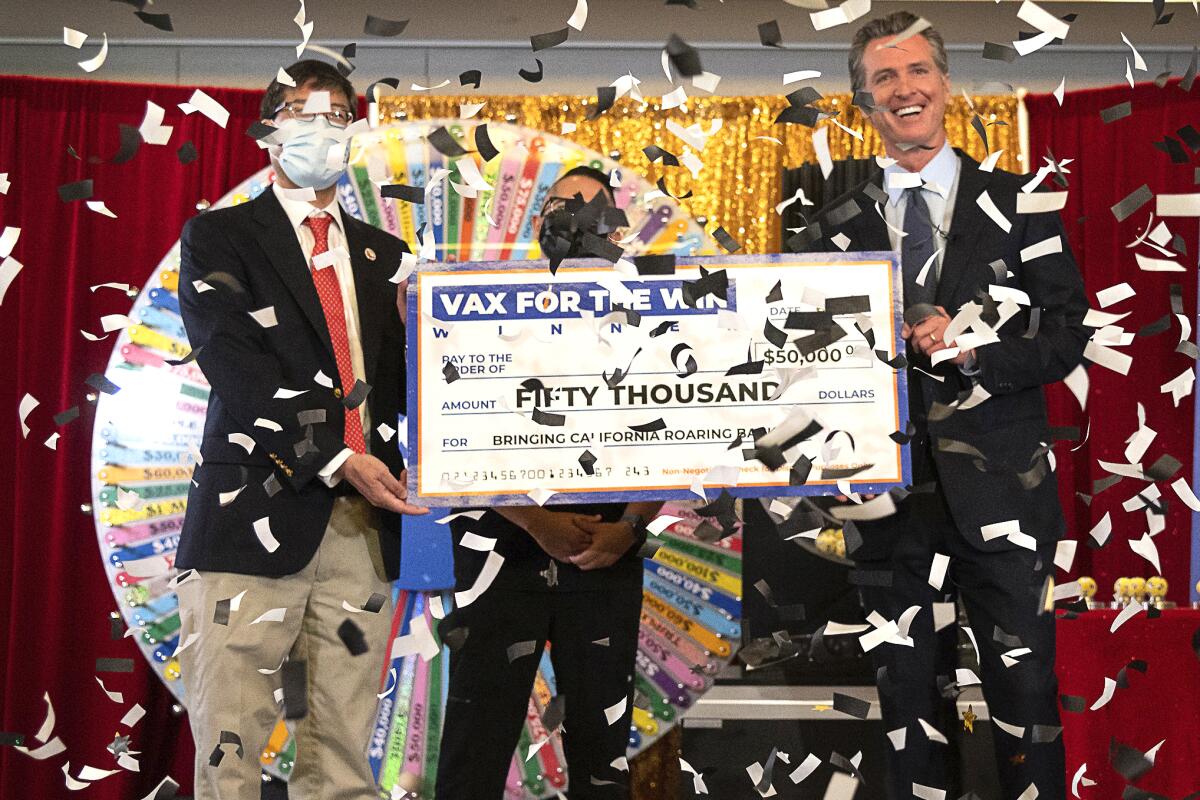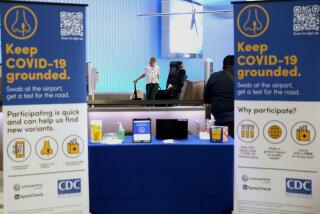Editorial: When will California’s state of emergency stop being an emergency?

- Share via
California’s Emergency Services Act doesn’t detail when an emergency declaration should be made or terminated. It leaves it up to the discretion of the governor to determine what constitutes an emergency and to decide when it’s over. The only imperative is that the latter happens “at the earliest possible date that conditions warrant.”
But when will conditions warrant the end of the state of emergency called by Gov. Gavin Newsom 15 months ago to respond to the COVID-19 pandemic? And what will it take to reach that point? Newsom hasn’t said, other than it won’t be on June 15,when the state is expected to lift the stay-at-home order, the mask mandate and the remaining business pandemic restrictions.
“We’re still in a state of emergency. This disease has not been extinguished. It’s not vanished. It’s not taking the summer months off,” he explained Friday during the first drawing in a series of cash prizes to encourage vaccinations.
It’s was not a very illuminating response, and Newsom’s political opponents immediately accused him of trying to have it both ways. They have a point; even as he’s touting the economic recovery and enviable vaccination rates, he is holding on to the broad emergency powers that allow him to unilaterally suspend and alter laws, curtail people’s private movements and award no-bid contracts, an authority Newsom has used at times to direct state dollars to his campaign donors.
Indeed, the crisis that gripped the state just a few months ago is gone. By most measures California is in a pretty good place, with COVID-19 tests coming back positive only 0.7% of the time on average over the past week and the lowest spread of the virus of any U.S. state. About 65% of the population has received at least one dose of a COVID-19 vaccine.
Nevertheless, what Newsom should have said Friday is that there are good reasons to keep the emergency declaration in place even if it seems as if the emergency is over. For one thing, it allows for federal emergency funding to keep flowing to the state and for programs launched to address the pandemic to stay in place. The moment the declaration is terminated, all the executive orders the governor has issued, such as the one allowing pharmacy technicians to give COVID-19 shots, will end.
The reality is that it is not unusual for state of emergency declarations to linger long after the crisis appears over. A case in point: The state of emergency declared after the Camp fire destroyed the town of Paradise in 2018 is still in effect, and could be for years more to help facilitate the rebuilding of the community. Yet no one appears to be especially upset about that.
The governor and other top officials have often made their jobs more difficult during the pandemic by trying to control the narrative rather than being straightforward and transparent. This has no doubt contributed to some of the frustration that drove more than 1.5 million Californians to sign the Newsom recall petition.
While it appears that Newsom is acting in good faith to protect Californians, he hasn’t done a great job communicating that. He needs to make it clear what it will take to lift the 58 executive orders and end the suspension or alteration of the 400-some laws he’s targeted, as well as what conditions will signal that there is no more state of emergency. The public can handle the full and unfiltered truth.
More to Read
A cure for the common opinion
Get thought-provoking perspectives with our weekly newsletter.
You may occasionally receive promotional content from the Los Angeles Times.










